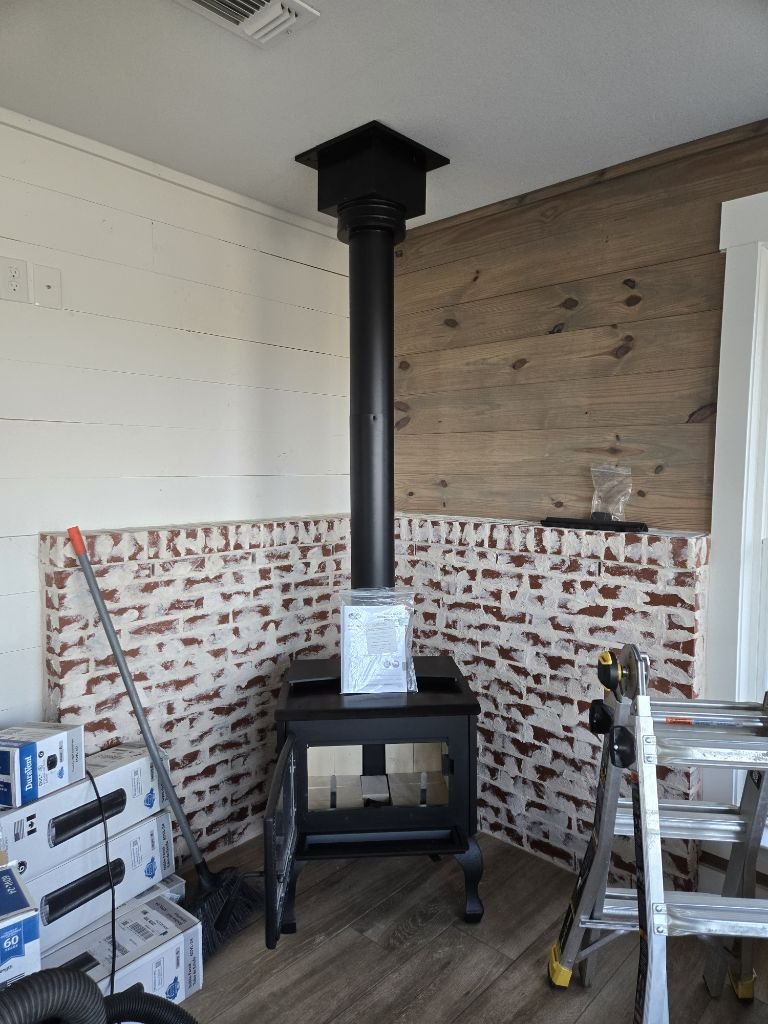Free-standing Wood Stoves
One of the main benefits to wood burning stoves is that they are much more efficient than traditional fireplaces, meaning: More heat can be produced, fewer emissions can be released, and longer fires that require less maintenance.
Heat Output:
Wood burning stoves with higher efficiencies will typically be able to generate more heat for your home from every piece of wood. However, not only does a wood stove need to extract the most amount of heat from the combustion of the firewood and waste gases (through the secondary combustion process), it also needs to be able to radiate that heat out into the room. The metal body of a wood stove allows it to do just that. A stove will absorb the heat from the fire inside and radiate that heat out into your home, even for a while after the fire inside has subsided.
There is a huge difference between the heat you can feel being let off from your stoves compared to your open fireplace. You can feel the warmth being radiated from your wood stoves even when sat across the room, while you need to sit near to your open fires to even feel the heat.
Wood stoves work by burning the firewood more slowly and efficiently, and by burning off the waste gases released by the combustion of the wood to generate even more heat. By combusting both the firewood itself and the waste gases more effectively, fewer emissions are released as a result. This helps to make wood stoves much more environmental friendly compared to traditional open wood burning fireplaces. Many cities have banned the use of open fireplaces to help improve local air quality.
Less Firewood
Wood burning stoves provide you with a better ability to create more efficient and longer burning fires compared to using traditional open fireplaces, but it also helps to reduce the amount of firewood used.
A reduction in the amount of firewood helps to:
Lower the amount of firewood used for every fire.
Lengthen the time for each fire using the same amount of firewood.
Reduce fuel costs over the lifetime of the stove.
Reduce the rate at which you use up your own supply of firewood, allowing you to have more fires and save on central heating costs.
More Control
Wood stoves provide you with the ability to have more control over how quickly and efficiency a fire inside a stove is burning, and therefore how much heat is being generated. A major downside of traditional open fireplaces is that the airflow through the fireplace and up the chimney can’t be controlled, which is one of the main reasons why they can be so inefficient.
Wood stoves create an enclosed environment where the air supply to the fire can be fully controlled by using the air vents. By controlling both the amount of fuel inside the stove and the amount of air getting to the fire, the fire can be slowed down so that it’s producing more heat from every piece of wood. As well as allowing you to control the airflow to the fire. wood stoves also help to slow down how quickly the air leaves the firebox. By keeping the waste gases released by the combustion of the wood inside the firebox for longer and at higher pressures, these gases can be burnt off to produce even more heat through a process known as secondary combustion.
No Electricity Required
Unlike other types of fireplaces such as electric fireplaces and pellet stoves, wood burning stoves don’t require a source of electricity in order to work.
This means that you’re able to help heat your home even through power outages.
As wood stoves radiate heat out into the room, a blower isn’t typically required. If you do need a fan to help circulate warm air around your home then you can use a stove fan or most stove do have an optional blower that can be installed.



